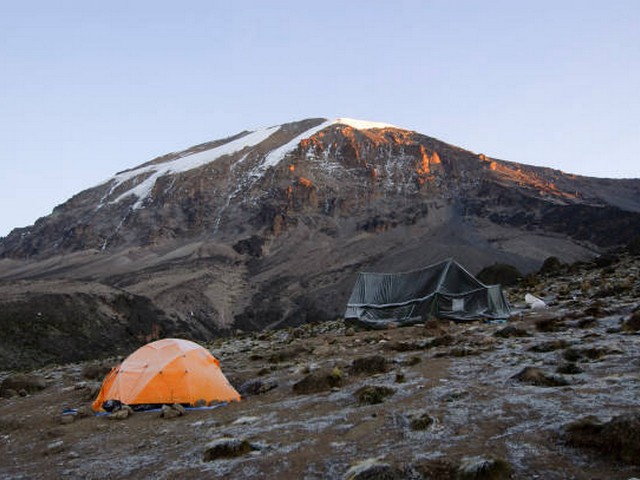Kilimanjaro’s Cultural Significance For The Chagga People
Mount Kilimanjaro isn’t just the highest peak in Africa, standing majestically above the rolling hills and plains; it’s a symbol of strength, heritage, and spiritual sanctity, especially to the Chagga people who have lived on its slopes for centuries. As the Kilimanjaro Centre for Trekking and Ecotourism (KCTE), we cherish, respect, and share the deep-rooted cultural significance of this iconic mountain with adventurers from around the globe. Join us on a journey through the rich tapestry of history and culture intertwined with the majestic Kilimanjaro.
The Chagga People: Guardians of the Mountain
The Chagga, one of the largest ethnic groups in Tanzania, have thrived on the fertile slopes of Kilimanjaro for over 300 years. Their intricate history, customs, and beliefs are as intertwined with the mountain as the rivers that spring from its glaciers.
Historical Integration with Nature
Kilimanjaro has provided the Chagga people with fertile soil, thanks to its volcanic activities, thereby aiding their evolution from hunter-gatherers to skilled agrarians. The mountain’s forest belt offers rich harvesting grounds for honey and medicinal plants, while its clear streams are lifelines for their crops.
Spiritual Significance
To the Chagga, Kilimanjaro is more than just a mountain—it’s a sacred entity. Spiritual leaders, known as ‘Mangis,’ have historically performed rituals at the foot of the mountain to thank the gods for blessings and to ask for continued protection and prosperity. These rituals underline the mountain’s role as a spiritual beacon for the Chagga people.
Cultural Practices Linked to Kilimanjaro
The culture of the Chagga is heavily influenced by the mountain’s presence. From rites of passage to agricultural practices, Kilimanjaro’s foothills are a stage where many of these traditions unfold.
Rites of Passage
The Chagga people celebrate key stages of life—birth, initiation, marriage, and elderhood—with ceremonies that often reference the mountain. For example, during the ‘Kiama’—the initiation into elderhood—elders recount stories and lessons from the mountain that highlight the virtues of wisdom and leadership.
Agricultural Calendar
Kilimanjaro’s seasons dictate the agricultural activities of the Chagga. The mountain’s weather patterns help them decide when to plant and harvest their crops, particularly bananas and coffee—their primary produce. This deep-rooted agricultural connection showcases their profound bond with Kilimanjaro’s ecological cycle.
Tourism and Cultural Preservation
At KCTE, we believe in responsible tourism that respects and contributes to heritage conservation. By choosing to climb Kilimanjaro with us, you support local Chagga communities directly and help preserve their cultural legacy.
Supporting Local Economies
Your trek contributes to local employment as we hire native Chagga guides and porters. This not only helps in economic upliftment but also ensures an authentic cultural exchange where stories and traditions of Kilimanjaro are narrated by the very people who keep them alive.
Eco-friendly Practices
We champion eco-friendly tourism practices to ensure that the beauty and integrity of Kilimanjaro are unharmed. This commitment also resonates deeply with the Chagga people’s philosophy of co-existing harmoniously with nature.
Why Climb Kilimanjaro with KCTE?
Embarking on a trek up Kilimanjaro with KCTE isn’t just about conquering a mountain; it’s about experiencing a way of life, understanding profound cultural narratives, and contributing to the sustainability of an awe-inspiring global heritage. Our expert guides, who are native to the region, enrich your journey with tales and insights into the Chagga way of life, making your climb a more immersive and enlightening experience.
Conclusion: A Call to Cultural Adventure
Climbing Kilimanjaro offers an unparalleled opportunity to not only witness the spectacular beauty of one of the world’s most famous mountains but also to engage with the rich cultural heritage of the Chagga people. At KCTE, we are dedicated to providing a journey that respects both the natural environment and the cultural significance of this majestic mountain.
Are you ready to explore Kilimanjaro’s peaks and discover the heart and soul of the Chagga heritage? Book your climb with Kilimanjaro Centre for Trekking and Ecotourism (KCTE) today, and be part of a trekking experience that goes beyond the ordinary.
FAQs About Climbing Kilimanjaro and Chagga Culture
Q: How difficult is it to climb Mount Kilimanjaro?
A: Kilimanjaro has routes of varying difficulty, accommodating both novice trekkers and experienced climbers. Our skilled guides support you every step of the way, ensuring a memorable and safe ascent.
Q: What is the best time of year to climb Kilimanjaro?
A: The best times to climb Kilimanjaro are during the dry seasons, from June to October and from December to March. This timing avoids the heavy rains and offers clearer views and better trekking conditions.
Q: How does KCTE contribute to cultural preservation?
A: KCTE invests a portion of all proceeds back into the local Chagga communities, supports cultural heritage projects, and promotes eco-friendly tourism practices that preserve the environment and cultural integrity of the area.
Q: Can I learn more about Chagga culture during my climb?
A: Absolutely! Our Chagga guides are more than happy to share stories, traditions, and insights into their culture as you trek, enriching your climbing experience with deep cultural immersion.
Explore Kilimanjaro not just as a mountain but as a symbol of cultural pride and timeless heritage. Book your journey with Kilimanjaro Centre for Trekking and Ecotourism (KCTE) and embrace a truly enriching adventure.




